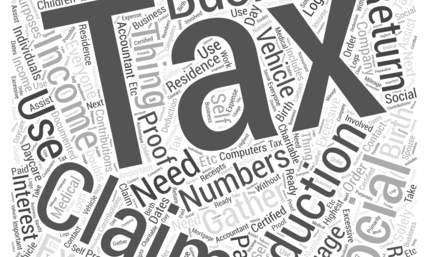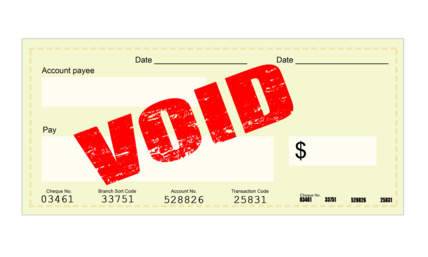LIHTC Meaning and How It Works
The Low Income Housing Tax Credit (LIHTC) program is among the tools used in the USA to build affordable housing. So, how does the complex LIHTC program really work, and how can we explain the LIHTC meaning?
This article explains LIHTC's meaning, what the program is meant to accomplish, how it operates, and its impact on affordable housing.
What Does LIHTC Meaning Refer To?
LIHTC meaning is Low Income Housing Tax Credit. It’s a federal tax incentive program. It encourages private investment in the development and rehabilitation of affordable rental housing. However, it’s specifically for low-income households.
The Tax Reform Act of 1986 created the program. Since then, it has become the largest source of new affordable rental housing in the U.S. Local agencies receive nearly $8 billion in annual budget authority every year through the LIHTC program. This allows them to issue tax credits for qualifying affordable housing projects.
How the LIHTC Program Works
The LIHTC meaning shows that the program is a tax incentive to property owners and investors who build affordable rental housing. Here's how it works:
-
Annual Credit Allocation
The federal government gives each state a set amount of tax credits every year based on a state's population. This allocation of $2.75 per capita in 2023 included a minimum allocation of $3,185,000 for smaller states.
-
State Housing Agency Administration
These credits are allocated to the developers of the qualifying affordable housing projects. This is done by the state housing finance agencies. Each state comes up with its Qualified Allocation Plan (QAP) with priorities and criteria to use in awarding credits.
-
Developer Applications
Developers then submit detailed proposals to their state housing agency about their projects. These applications include comprehensive information about the proposed development. It’ll also include how the project will meet community needs.
-
Competitive Selection Process
The state agency first reviews applications. Then, it awards credits based on the extent to which the proposed projects reflect priorities outlined in the QAP.
-
Syndication
Once awards of credit are done, developers typically sell them to investors. This is done through syndicators. The upfront capital necessary to fund the project is provided as a result of this process. And it’s called syndication.
-
Investor Benefits
Investors get tax credits that can be claimed over a 10-year period, reducing their federal tax liability. This explains why LIHTC continues to attract corporations’ investment. Examples include banks and insurance companies.
-
Compliance Period
In exchange for the tax credits, the property must comply with LIHTC program rules for at least 15 years. This includes income and rent restrictions. Some states have longer compliance periods, often reaching 30 years or more.
Key Features of LIHTC Properties
There are some requirements that rental properties must satisfy to qualify for the LITHC program. LIHTC meaning requires its properties to meet one of the following criteria:
-
At least 20% of units are rent-restricted and occupied by tenants with incomes at or below 50% of Area Median Income (AMI)
-
At least 40% of units are rent-restricted and occupied by tenants earning no more than 60% AMI
-
At least 40% of units are rent-restricted and occupied by tenants whose income does not exceed 60 percent of AMI. No individual tenant income greater than 80% (known as "income averaging")
-
Rent Restrictions: The income-restricted units are rented at a percentage of AMI. They generally cannot exceed 30 percent of the applicable income limit for the unit.
-
Compliance Period: It must stay affordable for 15 years, but some states mandate at least 30. It also offers long-term affordability.
-
Quality Standards: Construction and habitability requirements are set for LIHTC properties. This guarantees that low-income tenants dwell in a safe environment.
Types of LIHTC Credits
To fully understand LIHTC meaning, you need to know the two types of LIHTCs available:
-
9% Credits: These are usually most common for new construction with no additional federal subsidy and are usually given higher subsidies. Awards are given through a competitive process.
-
4% Credits: They are given a low subsidy. Also, these are typically used with tax-exempt bonds. Available on a noncompetitive basis to qualifying projects.
The Impact of LIHTC
The LIHTC program has had a monumental impact on affordable housing in the United States since its inception in 1986:
-
The LIHTC has been used to build or maintain over 3.5 million quality affordable housing units.
-
The program invests in the building and rehabilitating of approximately 110,000 affordable rental units a year.
-
LIHTC produces about 90 percent of affordable rental housing annually.
-
The program has, so far, seen at least $100 billion in private money going into affordable housing.
Benefits of the LIHTC Program
Now that we know LIHTC meaning, there are many key benefits of the program:
-
Leverages Private Investment
The private sector's affordable housing largely comes about through tax incentives offered by LIHTC. Federal resources are multiplied in terms of impact.
-
Flexibility
The program is flexible enough that it can also be used for any type of rental housing. It includes apartments, single-family homes, and special needs housing.
-
State Control
This program gives the states the freedom to choose their allocation priorities based on the local housing needs.
-
Quality Housing
LIHTC properties must meet high standards in order to guarantee safe, decent housing for low-income families.
Challenges and Criticisms
Despite its success, the LIHTC program faces some challenges and criticisms:
-
Complexity
Rules and financing structures in the program may be complicated. That may leave some developers and investors out.
-
Expiring Affordability
With required affordability periods coming to close, affordable units can risk being lost.
-
Geographic Distribution
Some critics feel that LIHTC properties are rarely constructed in the correct locations. These include locations of opportunity or where affordable housing is most urgently needed.
In Summary
Today, the Low Income Housing Tax Credit program is an indispensable tool in America's affordable housing crisis. LIHTC has created millions of homes through private investment. It has provided housing for low-income families, seniors, and persons with special needs.
It is important to understand the LIHTC meaning and mechanics, particularly for anyone working in affordable housing development, policy, or advocacy. The program may evolve and play an even bigger role in the future of affordable housing in the United States.
Understanding the LIHTC meaning is important for affordable housing developers. However, managing payroll for construction and property management teams can be equally important. If you’re looking for a simple way to make professional pay stubs, look no further than our online pay stub creator. Our tool can help simplify your payroll so you can focus on your mission of providing affordable housing.














